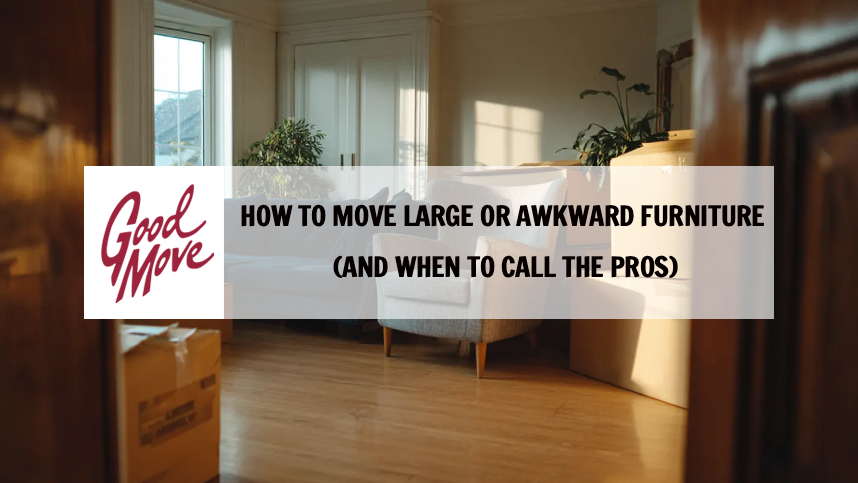
How to Move Large or Awkward Furniture (And When to Call the Pros)
Are you packing up and moving home soon?
Moving house is not for the faint-hearted; it’s a stressful business without the added headache of dealing with bulky, heavy, or oddly shaped furniture.
From that massive corner sofa and grand piano to a fragile antique wardrobe, these pieces often cause the biggest dramas on moving day.
Do you dismantle it yourself? Can it even fit through the front door? Can you even lift it on your own?
At what point are you thinking, is it wiser to hand things over to professional movers rather than risking personal injury or damage to your property that must be rectified at the very last minute?
This guide is for you! We will walk you through practical tips for tackling oversized or awkward items, plus we highlight the moment when calling in the experts really is the smarter (and safer) option.
Table of Contents
1. Measure Up Before You Move
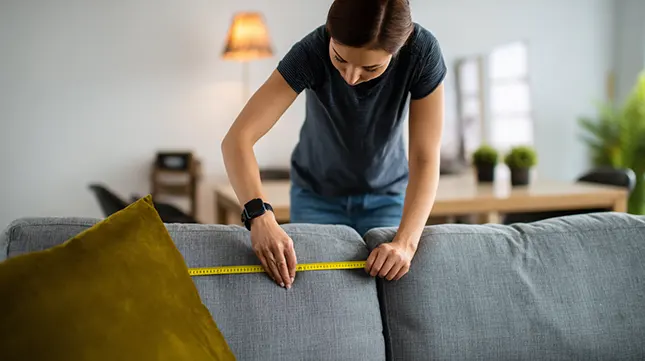
Planning well ahead is the best piece of advice anyone can take on board when moving home.
One of the most common mistakes people make is assuming their furniture will “just fit” in or out of the house.
Doors, staircases, and narrow hallways are often much less forgiving than you remember.
Well before moving day, grab a tape measure and note down the dimensions of all your largest items of furniture and the spaces, doorways, and stairwells that they need to travel through.
Planning early enough and sketching a quick plan of your home layout can help spot potential problem areas early, instead of having a last-minute panic attack on move day itself.
This incredibly simple step can save hours of stress and prevent costly dents or scratches as you leave your old home.
The Royal Society for the Prevention of Accidents (RoSPA) also advises that lifting accidents often happen when people underestimate awkward angles or tight corners, so preparation really is everything.
If you can gain access to your new home before you move in, you can also conduct the same checks at your new home so that you have peace of mind that everything will fit when you arrive.
2. Dismantle When Possible
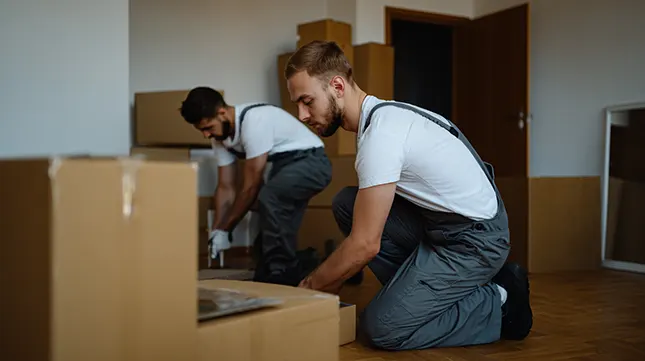
Walk through your home, room by room, noting down all the items that require some measure of dismantling.
Flat-pack furniture is relatively easy to take apart, but larger solid items often require more thought.
If your bed frame, wardrobe, or dining table can be safely dismantled, do it in advance and store the fittings in a clearly labelled bag.
If you can securely attach the bag to the item with strong tape, do so because it will save you from having to hunt for the fittings later.
Dismantling makes transport so much easier and reduces the risk of damage to walls and doors.
For particularly tricky furniture, check if the manufacturer offers assembly guides online. Brands like IKEA provide free downloadable manuals.
Remember, the extra half hour spent dismantling could save you from hours of manoeuvring and potential repair bills later.
Most removal companies will dismantle items such as beds and wardrobes for you, but within reason.
The professionals have much to do in a short space of time and won’t be able to take apart absolutely everything.
3. Protect Your Furniture (and Your Home)
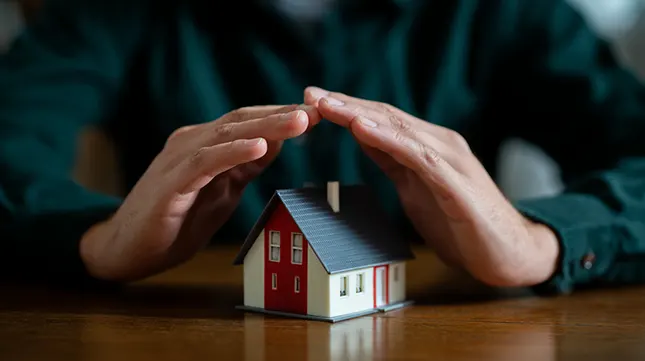
Large items aren’t just hard to move; they’re also prone to knocks, scrapes, and tears if not properly protected.
Wrapping your furniture in moving blankets, stretch wrap, or even old duvets provides a buffer against bumps.
Don’t forget your home itself needs protecting too: carpets, stair rails, door frames, and flooring often take the brunt of awkward manoeuvres.
Companies like B&Q and Homebase sell affordable floor protectors and corner guards that are well worth the small investment.
Taking time to safeguard both the furniture and your property keeps everything in good shape.
It also avoids the sinking feeling of unpacking damaged items in your new home or the hassle of making a claim with your home insurance.
4. Teamwork and Technique Matter
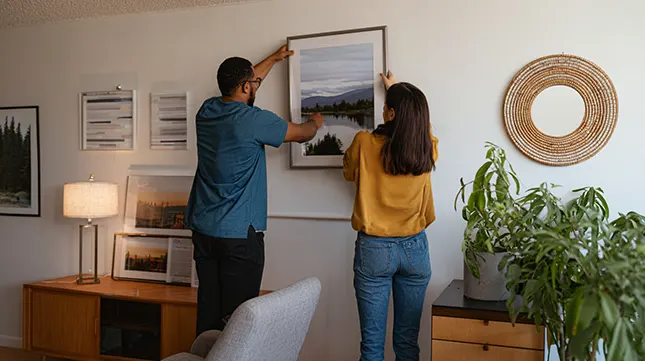
Trying to wrangle a hefty sofa alone is a recipe for disaster.
If you are undertaking a DIY move, at the very least, rope in a friend or two and agree on a moving strategy before you lift.
Communication is key: decide who’s leading, who’s navigating, and use simple commands like “tilt,” “stop,” or “step.”
The NHS has clear advice on safe lifting techniques (NHS guide here) that’s worth a read before tackling heavy jobs.
Always lift with your legs, never your back, and avoid twisting mid-carry.
The proper teamwork and technique make the difference between a smooth move and a painful pulled muscle or worse.
5. When to Call the Professionals
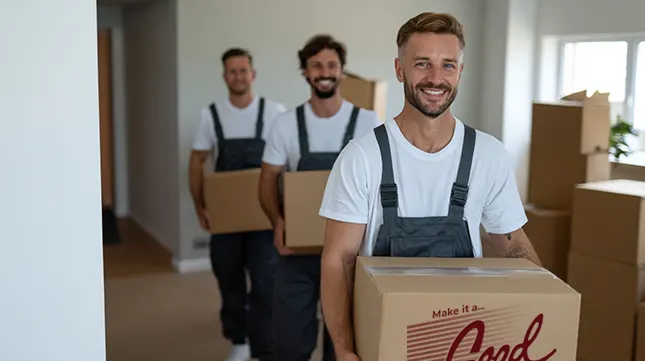
There comes a point where DIY just isn’t worth the risk.
Pianos, antique cabinets, oversized sofas, or anything that requires hoisting through windows should be handled by experts with the right equipment and insurance.
As professional movers at GoodMove we have the tools, training, and experience to deal with these challenges safely.
Having been in the removal industry for decades, moving home is all in a day’s work for us.
We can also dismantle and reassemble furniture as part of the service.
While getting in the professionals may feel like an extra expense, it’s often far cheaper than repairing broken furniture, or worse, a trip to A&E.
Why GoodMove Makes All the Difference
Tackling large or awkward furniture can quickly turn into the most stressful part of moving day.
Measuring, dismantling, wrapping, and lifting all take time and effort, and even then, some jobs need a professional touch.
That’s where GoodMove comes in. With decades of experience handling everything from pianos to oversized wardrobes under our belt, our capable removal crews know how to move the impossible.
Plus, moving home takes a lot of time when you do it yourself.
At GoodMove, we pride ourselves on our fast but careful house moves.
If you want a move that runs smoothly, without the worry of damage, injury, or last-minute panics, choosing GoodMove is the smart choice every time.
Still unsure whether to go it alone or call the pros? Get a quote and weigh the cost against the potential risks of going it alone.
Our transparent pricing, expert packing, and careful handling mean you can relax knowing your furniture and your home are in safe hands.
GoodMove quotes and house move surveys are free of charge, so you have nothing to lose!
Get a Quote
Recent Posts
- 9 Best Kent Commuter Towns for 2025 21th Nov 2025
- Best Places to Retire in Essex and Suffolk 14th Nov 2025
- Living in Chatham – The Ultimate Moving Guide 06th Nov 2025
- Living in Ipswich – 27 Reasons to Move to Suffolk 30th Oct 2025
- Understanding Your Removals Quote: What’s Included and What’s Not? 23th Oct 2025
- Commuting from Essex to London: The Ultimate 2025 Guide 16th Oct 2025
- How to Move Large or Awkward Furniture (And When to Call the Pros) 09th Oct 2025
- How To Move House in Just Two Months – 2025 Guide 03th Oct 2025
- How To Declutter Before Moving House – A Minimalist’s Guide 24th Sep 2025
- Change of Address Checklist 19th Sep 2025
- GoodMove Proudly Supports the Dedham Art Society’s Summer Exhibition 08th Sep 2025
- A Guide to Self-Packing vs. Professional Packing Services 04th Sep 2025
- Living in Epping – Moving to the Essex Market Town 28th Aug 2025
- Top 11 Reasons That Prevent People From Moving Home 21th Aug 2025
- 7 Great Reasons to Start Living in Gillingham 15th Aug 2025
- 2025 Guide: Average House Prices in Colchester and Market Trends 07th Aug 2025
- Living in Basildon – Essex’s Affordable Commuter Town 31th Jul 2025
- What Affects the Cost of Moving House in Essex? A 2025 Guide for Homeowners 24th Jul 2025
- Moving House in Essex? 8 Things People Forget Until It’s Too Late 17th Jul 2025
- When to Book a Removals Company in Essex – Expert Advice & Timelines 10th Jul 2025

